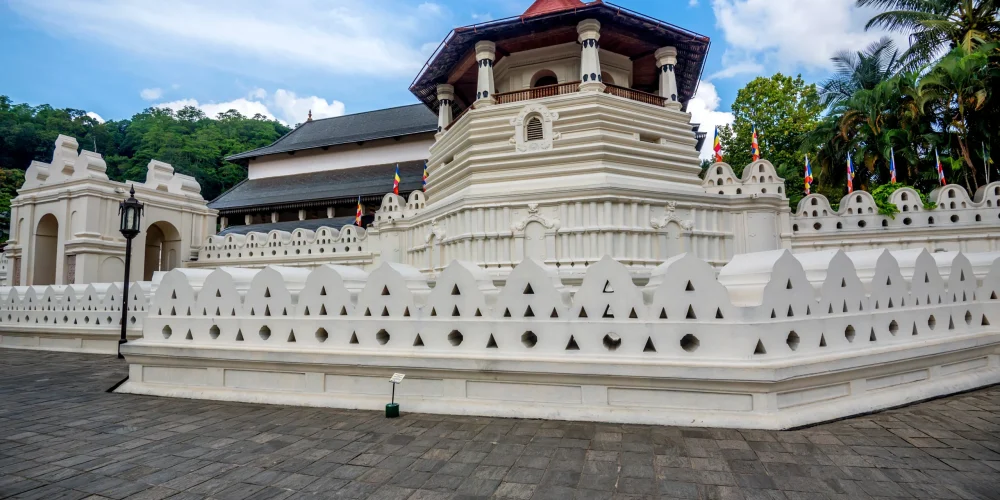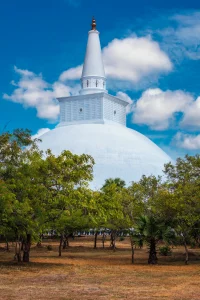The Temple of the Tooth Relic, also known as Sri Dalada Maligawa, is not just a magnificent example of Sri Lankan architecture and religious devotion—it is the spiritual heartbeat of the country. Nestled within the cultural capital of Kandy, this temple draws thousands of visitors each year, both devout pilgrims and curious travelers, all eager to experience the serene yet powerful atmosphere of one of Buddhism’s most important relic sites.
The History Behind the Temple of the Tooth Relic
The origins of the temple and its sacred relic trace back to the 4th century AD. According to historical accounts, the tooth relic of the Buddha was smuggled into Sri Lanka from India by Princess Hemamali and Prince Dantha, hidden in her hair. The relic has since been closely tied to the governance of Sri Lanka, as ancient kings believed that whoever possessed the sacred tooth had the divine right to rule the island.
Over the centuries, the relic was moved across several ancient capitals, from Anuradhapura to Polonnaruwa and Dambadeniya, before finally finding its permanent home in Kandy during the reign of King Vimaladharmasuriya I in the 16th century. The Temple of the Tooth Relic was constructed within the royal palace complex, symbolizing the union of spiritual power and state governance.
Today, the temple is a UNESCO World Heritage Site, standing as a lasting testament to Sri Lanka’s religious traditions, artistry, and architectural elegance.
A Place of Devotion and Daily Ritual
One of the most compelling reasons to visit the Temple of the Tooth Relic is to witness the deep-rooted religious practices that take place daily. Visitors can observe the Thevava ceremony, performed three times a day—morning, midday, and evening. During these rituals, Buddhist monks and traditional Kandyan drummers create a spiritual ambiance that is both haunting and beautiful. Though the tooth relic itself is not openly displayed, it is kept in a sacred chamber behind a golden stupa and revealed to the public on special ceremonial occasions.
As you step inside the temple, you will walk along corridors adorned with Kandyan-style paintings, elaborate carvings, and intricate woodwork that speak of a rich cultural legacy. Every wall and pillar in the temple tells a story—from the Jataka tales (stories of the Buddha’s past lives) to the kingdom’s historical battles and royal processions.
Cultural Significance and the Esala Perahera Festival
The temple plays a central role in the annual Esala Perahera, held in July or August. This grand procession is one of Asia’s most spectacular religious events, where the sacred tooth relic is paraded through the streets of Kandy in a golden casket atop a magnificently decorated elephant. The celebration includes fire dancers, traditional musicians, whip crackers, and thousands of devotees clad in white. It is a mesmerizing blend of devotion, heritage, and performance that captivates all who attend.
For many Sri Lankans, a pilgrimage to the Temple of the Tooth Relic is a once-in-a-lifetime spiritual journey. Even for non-Buddhist visitors, the temple offers a unique opportunity to witness living religious traditions in a sacred and historic setting.
Architecture and What to Expect
The temple complex is a harmonious blend of Sri Lankan, South Indian, and Southeast Asian architectural styles. Key structures include the Octagon Tower (Pattirippuwa), originally built as a royal viewing platform, and the Audience Hall (Magul Maduwa), where the kings held important ceremonies.
The atmosphere is serene, punctuated by the smell of jasmine flowers and incense, the sound of ceremonial drums, and the sight of devotees offering white lotus flowers. On full moon days (Poya), the temple sees a surge of pilgrims who come to engage in special religious observances.
Visitors are required to dress modestly—shoulders and knees must be covered. Footwear must be removed at the entrance. Photography is allowed in most areas, though respectful behavior is expected throughout the visit.
Travel Tips and Entry Information
- Opening hours: 5:30 AM to 8:00 PM daily.
- Best time to visit: Early morning or evening during Thevava rituals.
- Dress code: White or light-colored modest clothing is recommended.
- Ticket information: Entry tickets are not included in any tour package and must be purchased directly at the temple entrance.
- Guided tours: On-site guides are available and are highly recommended to better understand the history and spiritual context.
Why You Shouldn’t Miss It
Whether you’re a history enthusiast, a spiritual seeker, or a traveler keen to understand local culture, the Temple of the Tooth Relic offers an enriching, unforgettable experience. It’s more than just a tourist attraction—it’s a living piece of Sri Lanka’s cultural and religious fabric.
A visit to this temple allows you to connect with centuries of tradition, witness incredible rituals, and explore one of the country’s most beautiful cities. From the echoing chants of monks to the golden glint of the stupa, every moment spent here feels deeply meaningful.




